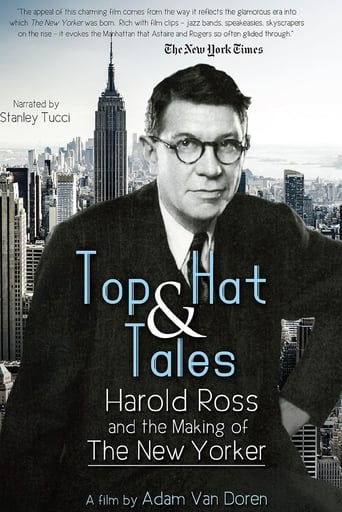Larry Silverstein
There's a lot of info crammed into less than 47 min. in this rather short documentary, which apparently was made in 2001 but not released on DVD till 2014, as I obtained a copy from my local library. It primarily focuses on Harold Ross, who along with his wife Jane Grant, a N.Y. Times reporter, and financier Raoul Fleischmann, founded The New Yorker magazine, in 1925.It's a rather fascinating story of how Ross born in Aspen, Colorado, the son of a miner and schoolteacher, and a high school dropout, became the chief editor of the prestigious magazine and remained so till his death in 1951. The dichotomy of Ross' rugged persona (one of his nicknames was Roughhouse Ross) and how he began to associate with, and eventually hire, the elite writers of the Algonquin Circle, in the Algonquin Hotel in NYC, makes an interesting story.Ross did indeed have a vision of the magazine, wanting to create a sophisticated publication filled with humor, satire, and attention to detail, which would also include great cartoons and cover illustrations (initially by Rea Irvin). After a rocky start, as so many new ventures like this would incur, The New Yorker began to get its "sea legs", and today some 90 plus years later it's still publishing (owned by Conde Nast).The film points out some of the negatives surrounding the magazine and Ross. For example, apparently for survival's sake, it virtually ignored the Great Depression, and relied on upscale advertisers. Also, showing some quotes and cartoons from Ross regarding African Americans and Jews, and from some comments from the interviewees in the movie, he certainly might be regarded as bigoted. Finally, he only began to hire women as in-house writers when he was forced to by WW2, as many of the males entered into military service. On the positive side, The New Yorker did give a great deal of space to covering the battles and atrocities of WW2, and after the destruction of Hiroshima devoted the entire magazine to the bombing.Note: There were no subtitles on my library DVD, and when I used the closed captioning on my remote many of the sentences were scrambled together for some reason. However, the sound quality was good, and the narration from actor Stanley Tucci was excellent.Overall, this brief documentary, directed by Adam Van Doren, didn't delve deeply into some issues with its time constraints, but I still found it quite interesting, and was rather amazed how Ross' vision became reality and how it has remained to this day in The New Yorker.
